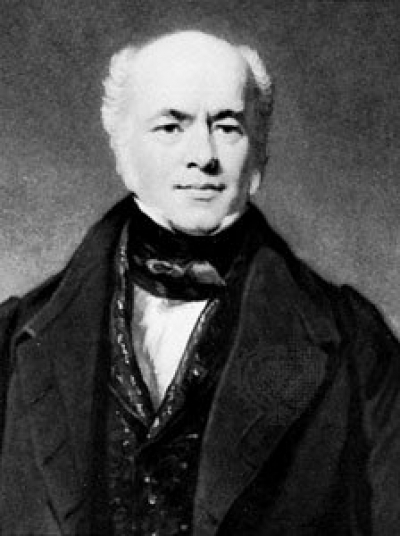The Baily's beads effect or diamond ring effect is a feature of total and annular solar eclipses. As the Moon covers the Sun during a solar eclipse, the rugged topography of the lunar limb allows beads of sunlight to shine through in some places while not in others. The effect is named after Francis Baily, who explained the phenomenon in 1836. The diamond ring effect is seen when only one bead is left, appearing as a shining "diamond" set in a bright ring around the lunar silhouette.Lunar topography has considerable relief because of the presence of mountains, craters, valleys, and other topographical features. The irregularities of the lunar limb profile (the "edge" of the Moon, as seen from a distance) are known accurately from observations of grazing occultations of stars. Astronomers thus have a fairly good idea which mountains and valleys will cause the beads to appear in advance of the eclipse. While Baily's beads are seen briefly for a few seconds at the center of the eclipse path, their duration is maximized near the edges of the path of the umbra, lasting 12 minutes.
After the diamond ring effect has diminished, the subsequent Baily's beads effect and totality phase are safe to view without the solar filters used during the partial phases. By then, less than 0.001% of the Sun's photosphere is visible.
Observers in the path of totality of a solar eclipse see first a gradual covering of the Sun by the lunar silhouette for just a small duration of time from around one minute to four minutes, followed by the diamond ring effect (visible without filters) as the last bit of photosphere disappears. As the burst of light from the ring fades, Baily's beads appear as the last bits of the bright photosphere shine through valleys aligned at the edge of the Moon. As the Baily's beads disappear behind the advancing lunar edge (the beads also reappear at the end of totality), a thin reddish edge called the chromosphere (the Greek chrma meaning "color") appears. Though the reddish hydrogen radiation is most visible to the unaided eye, the chromosphere also emits thousands of additional spectral lines.
Francis Baily (28 April 1774 – 30 August 1844) was an English astronomer. He is most famous for his observations of "Baily's beads" during a total eclipse of the Sun. Baily was also a major figure in the early history of the Royal Astronomical Society, as one of the founders and as the president four times.

1836May, 15
Francis Baily observes "Baily's beads" during an annular eclipse.
Choose Another Date
Events on 1836
- 23Feb
Siege of the Alamo
Texas Revolution: The Siege of the Alamo (prelude to the Battle of the Alamo) begins in San Antonio, Texas. - 25Feb
Colt Firearms
Samuel Colt is granted a United States patent for the Colt revolver. - 6Mar
Battle of the Alamo
Texas Revolution: Battle of the Alamo - After a thirteen-day siege by an army of 3,000 Mexican troops, the 187 Texas volunteers, including frontiersman Davy Crockett and colonel Jim Bowie, defending the Alamo are killed and the fort is captured. - 21Apr
Battle of San Jacinto
Texas Revolution: The Battle of San Jacinto: Republic of Texas forces under Sam Houston defeat troops under Mexican General Antonio López de Santa Anna. - 22Apr
Battle of San Jacinto
Texas Revolution: A day after the Battle of San Jacinto, forces under Texas General Sam Houston identify Mexican General Antonio López de Santa Anna among the captives of the battle when one of his fellow captives mistakenly gives away his identity.

 English
English  español
español  français
français  português
português  русский
русский  العربية
العربية  简体中文
简体中文 